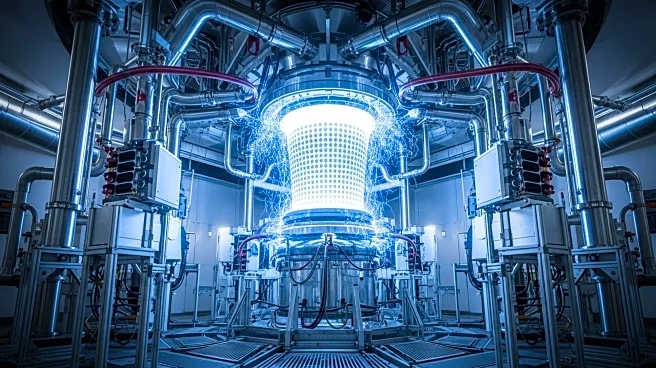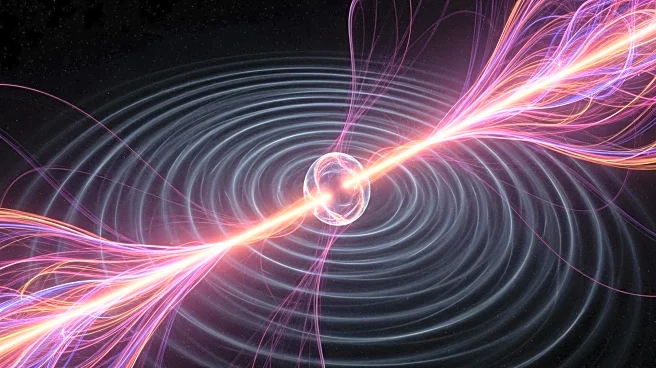What is the story about?
What's Happening?
Researchers at Seoul National University have demonstrated multiscale coupling in plasma, a significant advancement in plasma physics. The study reveals how microscopic magnetic ripples can induce large-scale structural changes in plasma. This discovery has profound implications for fusion energy technology and the study of cosmic phenomena. The research, led by Professor Hwang Yong-Seok, could pave the way for new breakthroughs in both fusion energy and astrophysics, offering insights into the universe's origins.
Why It's Important?
Understanding multiscale coupling in plasma is crucial for advancing fusion energy technology, which aims to replicate the sun's energy-producing processes in a controlled environment. This discovery could lead to more efficient and sustainable fusion reactors, providing a clean and abundant energy source. The research also offers new clues for understanding cosmic events such as solar flares and geomagnetic storms. The interdisciplinary collaboration between experts in fusion and theoretical physics highlights the importance of cross-disciplinary research in scientific advancements.
What's Next?
The findings could serve as a foundation for developing new fusion technologies. The researchers hope their work will inspire further investigations into plasma physics and its applications in fusion energy and astrophysics. The discovery of multiscale coupling opens new possibilities for sustainable energy solutions and a deeper understanding of the universe. Continued collaboration between scientists across disciplines will be essential in pushing the boundaries of plasma physics research.
AI Generated Content
Do you find this article useful?













